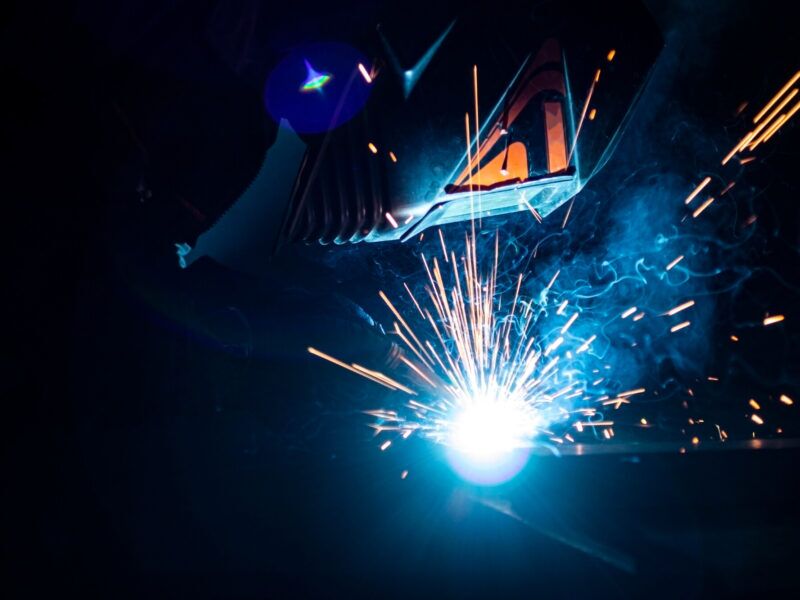Professional Techniques for Preventing Weld Undercut Efficiently
Professional Techniques for Preventing Weld Undercut Efficiently
Blog Article
Understanding the Art of Welding: How to Avoid Undercut Welding Issues for Flawless Construction Outcomes
By understanding the origin creates of undercut welding and implementing efficient strategies to avoid it, welders can boost their craft to new degrees of excellence. In the quest of remarkable manufacture results, understanding the art of welding to avoid undercut issues is not simply a skill yet a need for those making every effort for excellence in their job.
Understanding Undercut Welding

To stop undercut welding, welders need to guarantee appropriate welding specifications, such as adjusting the current, voltage, traveling speed, and preserving the right electrode angle. In addition, making use of the appropriate welding method for the specific joint setup is important. Utilizing weaving movements or backstepping methods can help make sure correct weld metal deposition and minimize the possibility of undercut formation. Routine inspection of welds throughout and after the welding procedure is also vital to capture any kind of undercut early and make necessary modifications to avoid additional issues. Preventing weld undercut. By recognizing the sources of undercut welding and carrying out precautionary steps, welders can accomplish top notch, structurally audio welds.
Reasons of Undercut in Welding
Understanding the variables that contribute to undercut in welding is important for welders to create high-quality, structurally sound welds. When the weld metal does not correctly fill up the groove created in between the base steel and the previously deposited weld steel, damaging occurs. A number of elements can bring about undercut in welding. One common reason is too much warmth input. Welding at heats for extensive periods can result in the base steel thawing even more than wanted, resulting in damage. Poor welding present or wrong welding rate can likewise contribute to damage. Inadequate current might not supply adequate heat to melt the base and filler steels adequately, while excessive speed can stop proper fusion, triggering undercut. In addition, improper electrode angles or wrong torch adjustment techniques can create locations of low weld metal deposition, advertising undercut. Comprehending these reasons and applying appropriate welding strategies can help stop undercutting concerns, ensuring strong and long lasting welds.
Strategies to Prevent Undercutting

To mitigate the threat of undercutting in welding, welders can employ critical welding techniques aimed at boosting the quality and stability of the weld joints. Furthermore, using the appropriate welding method for the particular joint setup, such as weave or stringer grains, can add to reducing damaging.
Furthermore, appropriate joint prep work, consisting of making sure clean base materials without impurities and using the proper welding consumables, is critical in avoiding undercut issues. Using back-step welding strategies and controlling the weld bead account can likewise aid disperse warmth uniformly and lessen the risk of undercut. Normal inspection of the weld joint throughout and after welding, along with implementing quality control measures, can aid in addressing and finding damaging problems promptly. By executing these techniques vigilantly, welders can accomplish flawless construction results with very little undercut defects.
Significance of Proper Welding Parameters
Choosing and preserving ideal welding specifications is essential for achieving effective welds with minimal problems. Welding criteria describe variables such as voltage, current, travel speed, electrode angle, and shielding gas circulation price that straight impact the welding procedure. These specifications have to be meticulously readjusted based on the type of product being bonded, its thickness, and the welding technique employed.
Appropriate welding criteria make certain the appropriate quantity of warmth is put on melt the base metals and filler product evenly. If the criteria are set too high, it can bring about too much warm input, creating burn-through, spatter, or distortion. On the other hand, if the explanation specifications are too reduced, incomplete combination, lack of infiltration, or undercutting may happen.
Quality Control in Welding Operations

Final Thought
In verdict, mastering the art of welding needs a complete understanding of undercut welding, its reasons, and methods to avoid it. By making certain appropriate welding criteria and applying quality control practices, remarkable fabrication outcomes can be accomplished. It is vital for welders to consistently aim for excellence in their welding procedures to prevent undercut issues and create top notch welds.
Undercut welding, an usual flaw in welding processes, happens when wikipedia reference the weld steel doesn't appropriately fill up the groove and leaves a groove or depression along the bonded joint.To protect against undercut welding, welders need to make sure proper welding specifications, such as adjusting the current, voltage, travel rate, and preserving the right electrode angle. Poor welding existing or inaccurate welding rate can likewise add to damage.To reduce the threat of damaging in welding, welders can employ strategic welding techniques intended at boosting the quality and honesty of the weld joints.In verdict, understanding the art of welding calls for a complete understanding of undercut welding, its reasons, and techniques to stop it.
Report this page